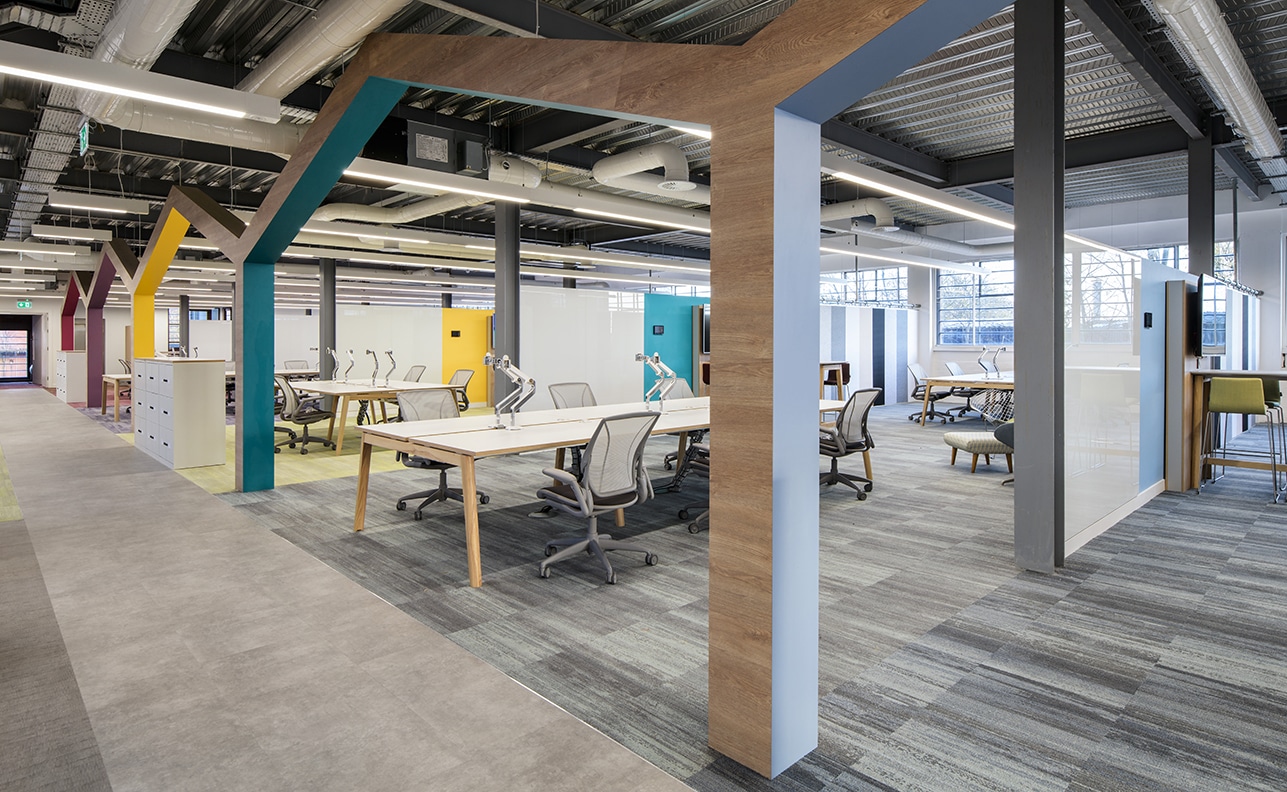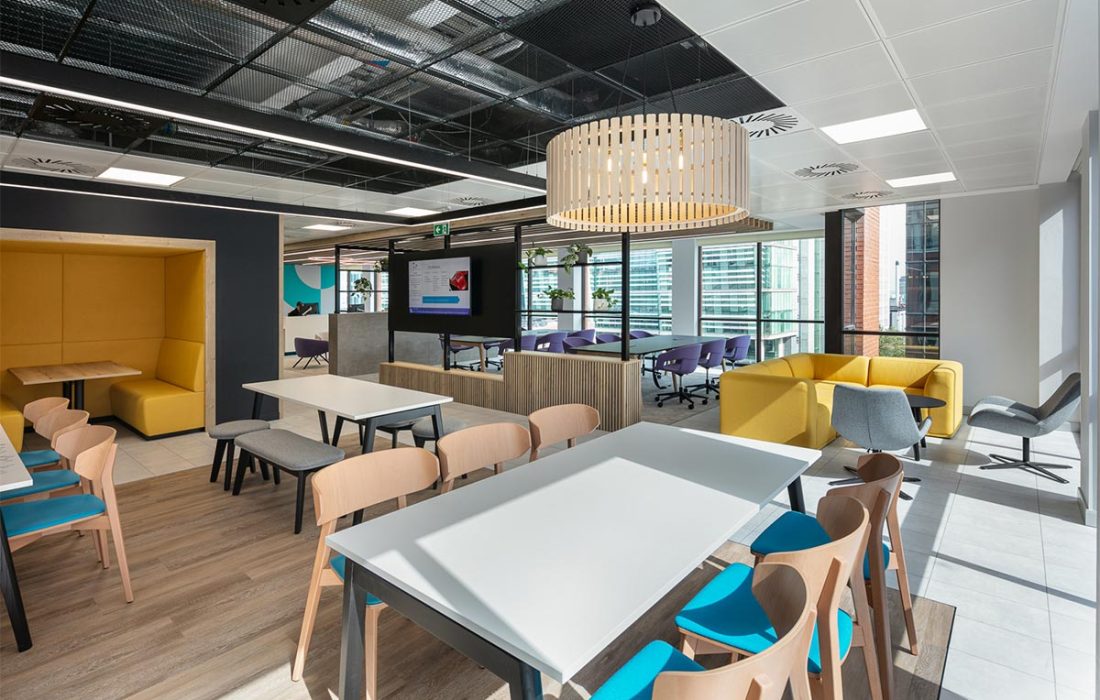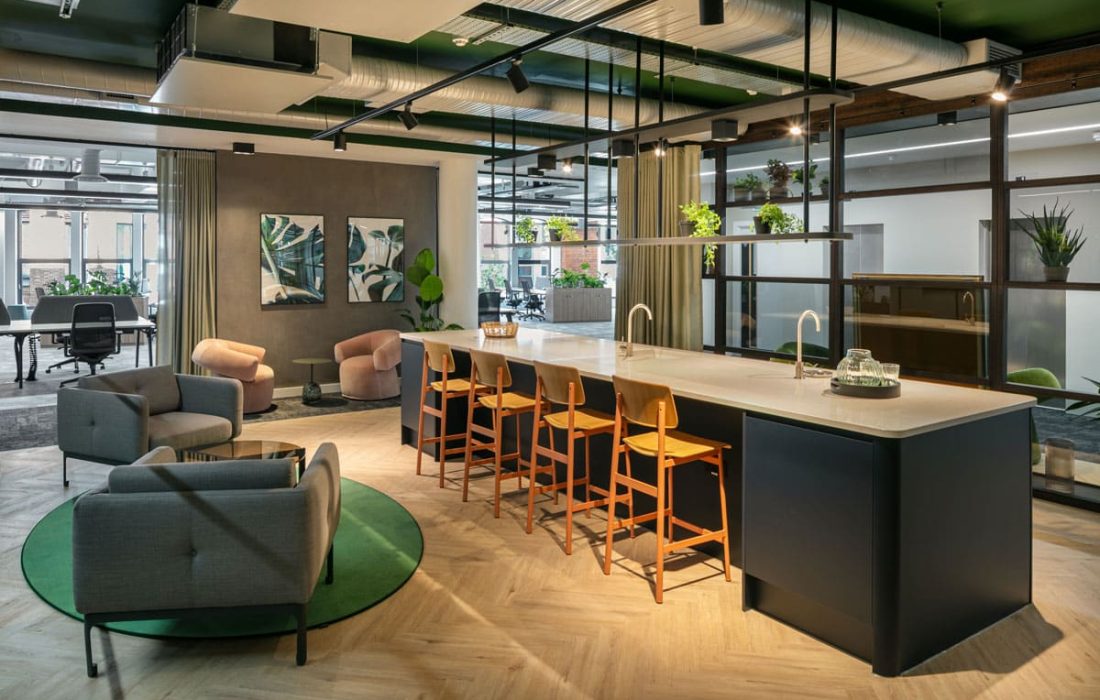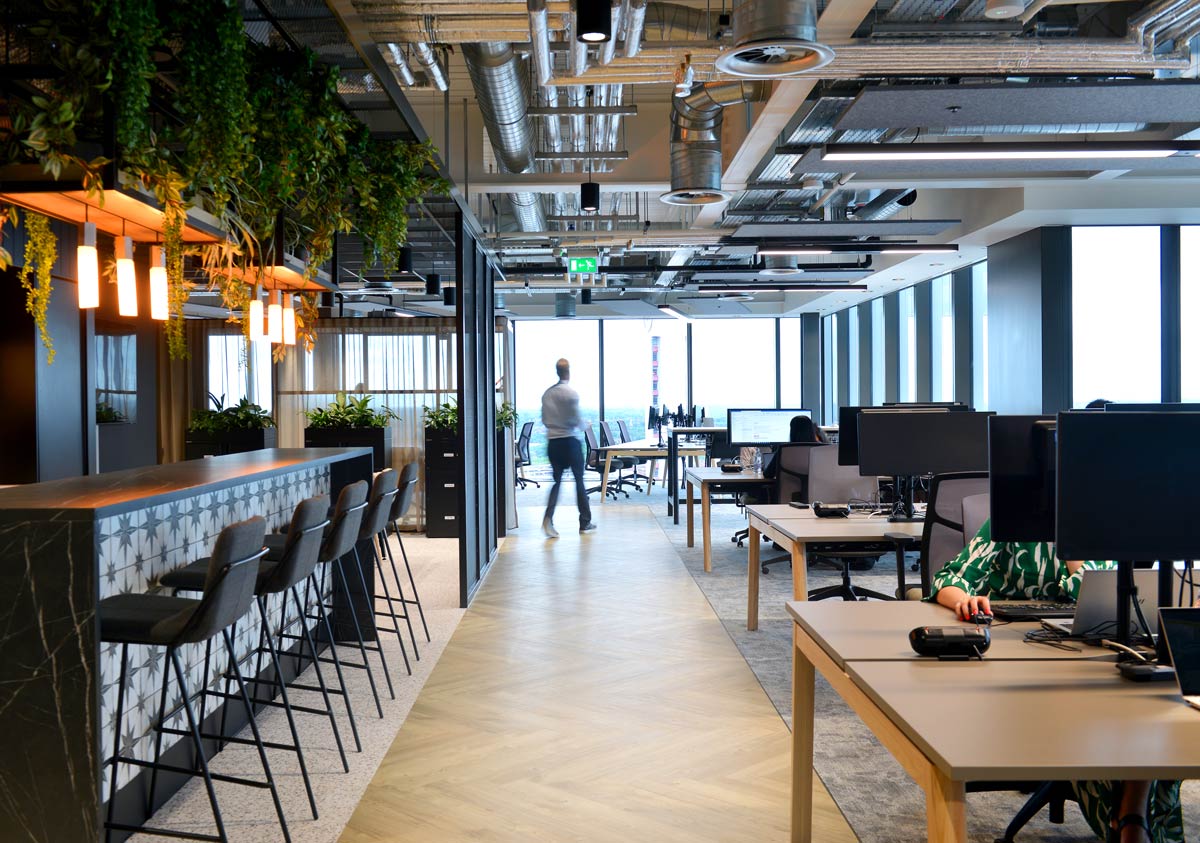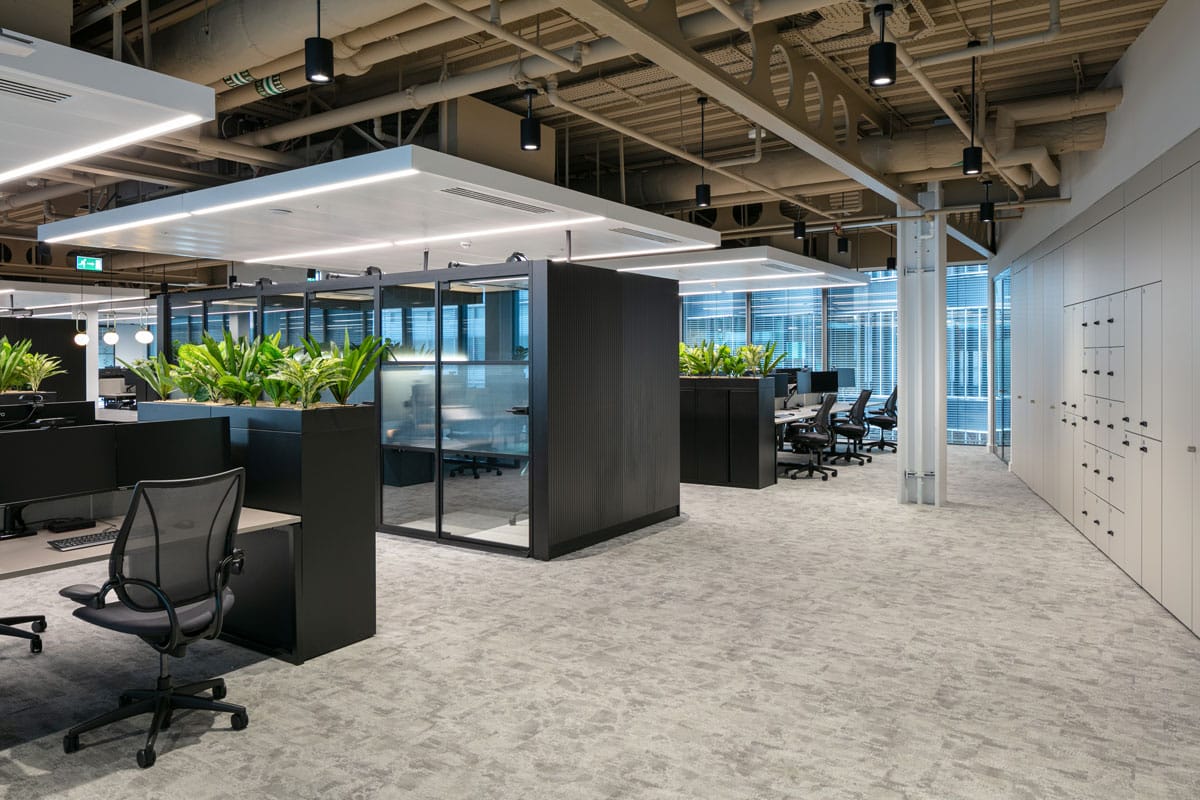As hybrid and remote working continue to redefine the modern workplace, office environments must evolve to meet these changing needs. Multi-functional design is key to achieving this. By creating spaces that adapt to a variety of tasks and user preferences, businesses can support productivity, collaboration, and wellbeing – all within a single footprint.
What Are Multi-Functional Office Spaces?
Multi-functional spaces are areas within an office that serve more than one purpose. A well-designed space might shift between focused individual work, team collaboration, client meetings, or even informal socialising. These flexible environments are essential for hybrid teams, where in-person attendance fluctuates.
Instead of allocating fixed desks to every employee, forward-thinking companies are turning to zones that accommodate different working styles. This can include shared hot-desking areas, enclosed meeting pods, breakout lounges, and tech-enabled collaboration zones – all within a cohesive layout.
Why Flexibility Matters in Modern Workplaces
The need for flexibility in office design has grown alongside changing work habits. Many employees now split their time between home and the office. As a result, workspaces need to be adaptable, efficient, and capable of supporting a wider range of activities throughout the day.
Moreover, flexible design plays a key role in talent retention. A well-considered workspace helps attract employees who value autonomy and work-life balance. It also reduces underutilised space, cutting operational costs and improving sustainability outcomes.
Key Principles of Designing Multi-Functional Spaces
1. Zoning Without Walls
2. Modular and Mobile Furniture
Versatile furniture is a must. Choose modular seating, foldable desks, and stackable chairs to ensure your space can transform easily. Mobile whiteboards or divider screens allow teams to set up ad hoc meeting areas wherever needed.
This approach ensures you’re not locked into a single layout – an important feature in today’s ever-evolving work environment.
3. Smart Use of Technology
Digital collaboration tools play a vital role in connecting remote and in-office staff. Ensure your meeting spaces are equipped with video conferencing tech, wireless screen sharing, and integrated AV systems. Even informal areas can benefit from built-in charging points and high-speed Wi-Fi.
Tech-friendly environments help bridge the gap between physical and virtual teams, making flexible working more seamless.
4. Storage That Supports Agility
5. Wellbeing Considerations
Office design should never sacrifice comfort for versatility. Prioritise natural light, acoustic comfort, greenery, and ergonomic furniture to support employee wellbeing. Incorporating biophilic design elements – such as indoor plants and natural textures – can help improve mood and reduce stress.
After all, a space that’s beautiful, comfortable and functional is far more likely to be used effectively.
Supporting Hybrid Workforces
Flexible working isn’t just about where people work – it’s also about how they work. Multi-functional design supports hybrid teams by ensuring that everyone, whether onsite or remote, can stay engaged and connected.
Consider introducing desk booking systems, occupancy sensors, or employee feedback tools to help you optimise the use of your flexible spaces. Regular reviews and feedback loops ensure your layout continues to meet evolving needs.
Sustainability Through Smart Design
Multi-functional offices are inherently more sustainable. By maximising space efficiency and avoiding overbuilding, businesses can reduce their carbon footprint. Additionally, specifying long-lasting, adaptable furniture cuts down on waste and supports circular design principles.
At ADT Workplace, sustainability is always a priority. Our approach blends environmentally responsible materials, energy-efficient technologies, and thoughtful layouts to reduce environmental impact and futureproof your space.
Final Thoughts
Designing a multi-functional office isn’t about following a trend – it’s about creating a high-performance environment tailored to your team’s needs. Whether you’re preparing for hybrid work, downsizing your footprint, or enhancing your workplace culture, flexible design can provide the adaptability and resilience your business needs to thrive.
With the right strategy, your office can become a dynamic space that empowers your people and supports business success.

